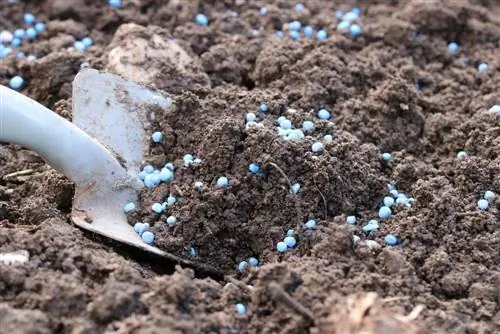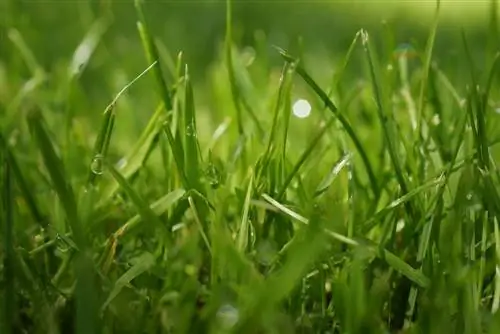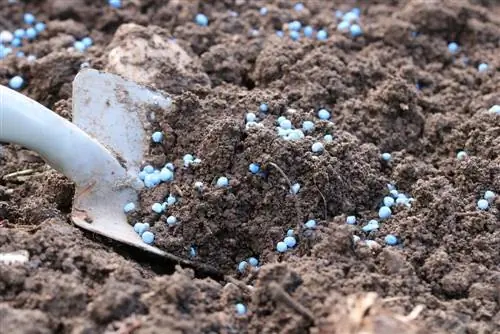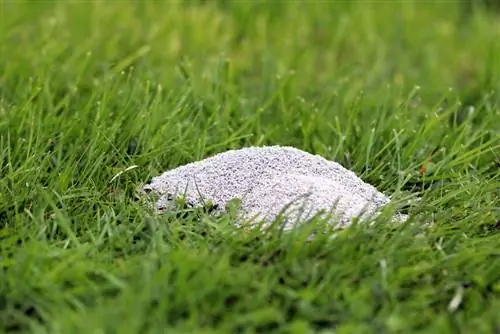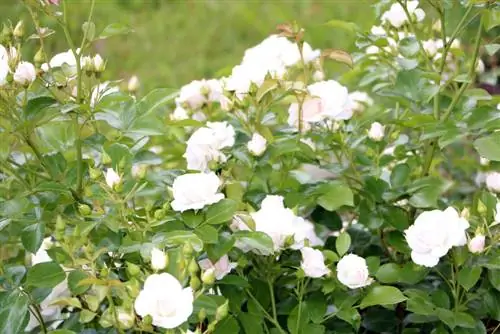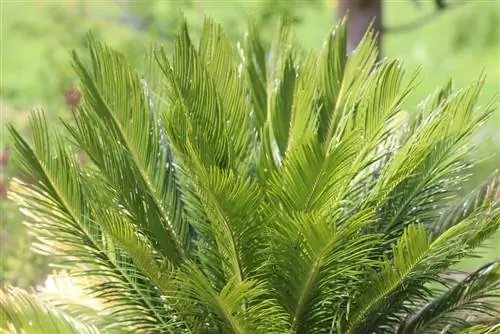- Author admin [email protected].
- Public 2023-12-17 03:39.
- Last modified 2025-01-24 12:45.
In spring, when the garden comes to new life, in addition to water and sunlight, it also needs good fertilizer, which guarantees abundant flowers and a harvest. Many nutrients that were lost to the soil during the long winter must now be returned to the plants so that they can develop he althily and vigorously again in the new gardening year. But which fertilizer should be used here and how to fertilize properly in spring.
The ideal time
Preparation for nutrient-rich soil can begin as soon as the first frost-free days arrive. When the soil has dried so well that it no longer sticks to the garden tools, then it is the ideal time to start. Of course, this varies from region to region and from year to year and a specific date cannot therefore be named as the ideal time. The beds must be prepared before applying fertilizer.
The preparation
All beds must be prepared so that the soil can absorb the new nutrients. It is important that beds with annual plants, which also include vegetable beds, are cleared of all contamination if this has not already been done in autumn. For perennial plants, dead plant parts are removed and the trees are cut back if necessary and fallen leaves are upright. Weeds that begin to sprout with the first rays of sunshine also need to be removed for the first time. However, the ground should not be dug up, but should only be carefully loosened up with a digging fork.
Tip:
The digging fork must be handled very carefully, especially in beds where there are still plants, so that no roots are damaged.
Check soil condition
Every garden soil is different. There are loamy or sandy soils, and the fertilizer must be chosen accordingly. Many hobby gardeners have even started having soil samples sent to the laboratory to find out what their pH value is. This is important so that it can be determined which fertilizer should be used. Here you can proceed as follows:
- take samples from all areas, such as lawns, vegetable patches or ornamental gardens
- this should be done in 10 to 15 places
- these are mixed per bed and sent to a laboratory
- costs between 10 and 20 euros
- private and state-monitored laboratories carry out these tests
Tip:
If you have your garden soil tested for its condition in a laboratory, you will receive a list of required fertilizers with your result and are therefore on the safe side when it comes to fertilizing.
Compost and horn shavings
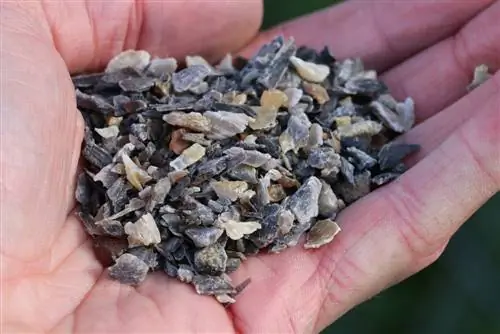
Nitrogen can be found too little in almost every soil in this latitude. Therefore, fertilization with horn shavings usually always makes sense because it replenishes enough nitrogen into the soil. Compost can always be used as fertilizer when there is sufficient potassium and phosphorus in the soil and these no longer need to be added. The amount for the ideal fertilization can be calculated as follows:
- about 100 grams of horn shavings per square meter of garden soil
- Heavy eaters such as cucumbers, tomatoes or pumpkins need more
- Beans, onions or peas are weak eaters
- these require less nitrogen content in the soil
- 3 liters of compost are per square meter of soil
Tip:
It makes sense to sieve the compost that is to be used beforehand, because this way only the parts that have already been completely composted are used. All larger parts that are still stuck in the sieve belong back in the compost for further decomposition.
Different types of fertilizers
Ideally, the prepared soil is fertilized about two weeks before replanting. For beds in which perennial plants are already established, fertilization can be carried out directly during bed preparation using a digging fork. Depending on which fertilizer is used, it must be carefully folded in, mixed with water or simply sprinkled over the bed. This means that the nutrients can penetrate into the soil and be distributed here before new planting takes place. When purchasing fertilizers from well-stocked specialist retailers, you should always strictly adhere to the manufacturer's instructions, because neither over-fertilization nor fertilization that distributes too few nutrients is helpful in obtaining a rich harvest and the best possible result. In addition to the home-made compost and horn shavings, which must always be carefully mixed into the soil, the following fertilizers are also available commercially:
Organic complete fertilizer
- has the advantage that it consists of natural raw materials
- Everything the plants need in terms of nutrients is included here
Limetic nitrogen
- keeps the pH value of the soil stable
- is used before actual fertilization
Cow or horse manure
- unfortunately it has an odor
- However, has a relatively balanced nutritional content
Bluegrain
- relatively well-known slow-release fertilizer
- all required nutrients are supplied
- However, it can pollute the groundwater through seepage of nitrate
Liquid fertilizer
- are generally used for potted plants
- they are administered with the irrigation water
- many special products available
- Liquid fertilizers are quickly washed out
- Pantekali only contains potassium, sulfur and magnesium
- good for tomatoes, all root vegetables and potatoes
Epsom S alt
is only used for acute magnesium deficiency symptoms
Tip:
First and foremost, it is advisable to use a complete fertilizer that is equally ideal for all plants. Special fertilizers can or must only be used if the soil sample shows something different. Anything else involves far too much effort and, above all, costs money. Because the special fertilizers are often very expensive to purchase.
Fertilize the lawn
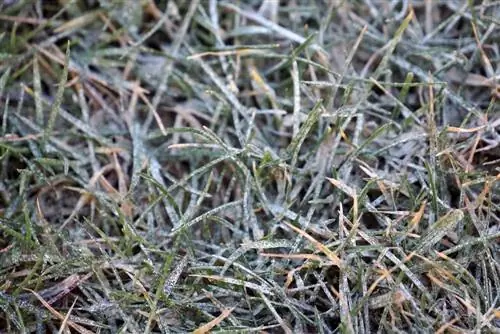
Even a lawn area, regardless of whether it is small or extensive, needs fertilizer so that the lawn can assert itself well against weeds. If the lawn soil has a pH value below 5.5, the soil must first be sufficiently limed before fertilization. To do this, around 150 grams of lime are spread over one square meter of lawn. The lime gets into the soil through watering. You can then fertilize as follows:
- fertilization can take place three weeks after liming
- the right time is early spring
- here you can look for the blooming forsythia
- If the lawn is higher than five centimeters, mow before fertilizing
- Use commercially available nitrogen-containing lawn fertilizer
- can be used for most types of lawn
- The lawn is scarified three to four weeks after fertilization
- the individual blades of grass have become strong due to fertilization
- all weeds and leftover grass cuttings must be removed
Tip:
It rarely happens that the lawn has a pH value of over 8.5. If this is the case, a very acidic fertilizer must be used.
Conclusion
To prepare the soil well in spring, it is not enough to get fertilizer from the store and sprinkle it over the bed or simply use any liquid fertilizer. A lot more has to be done when fertilizing in spring in order to achieve a good result for ornamental plants and in the kitchen garden. Especially now, in this important growth phase for all plants, the hobby gardener should spare a little more time and prepare his garden well for the new season.

